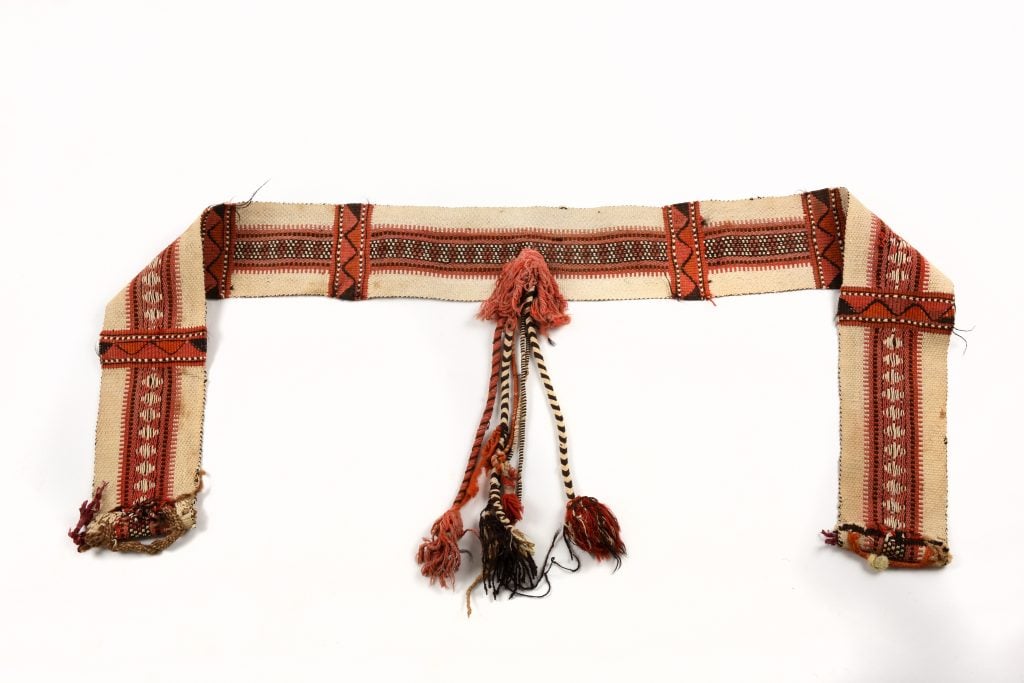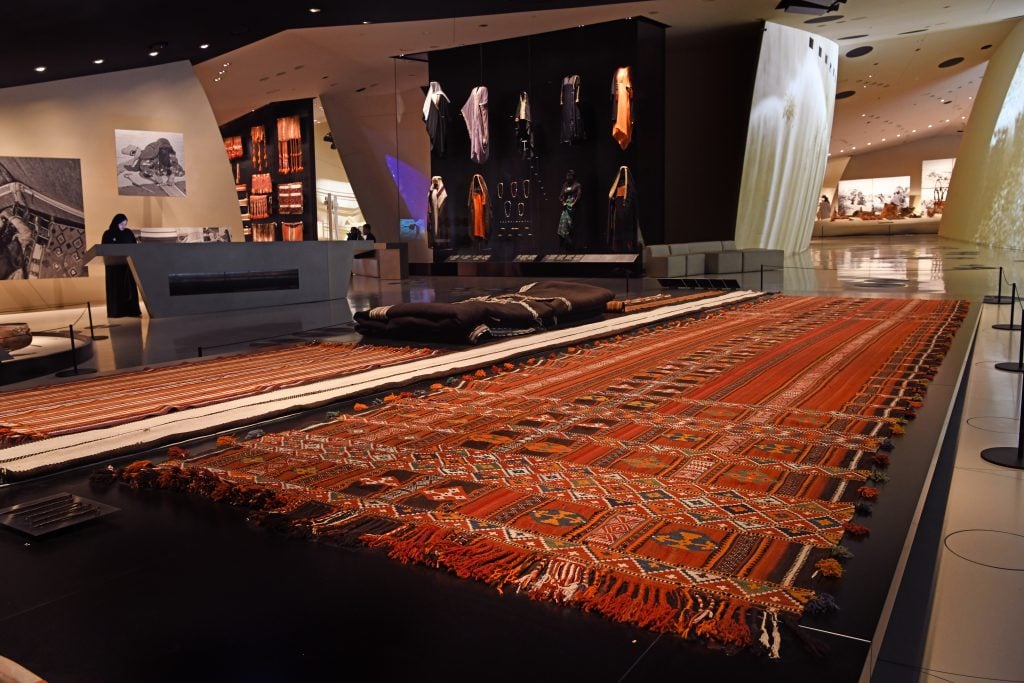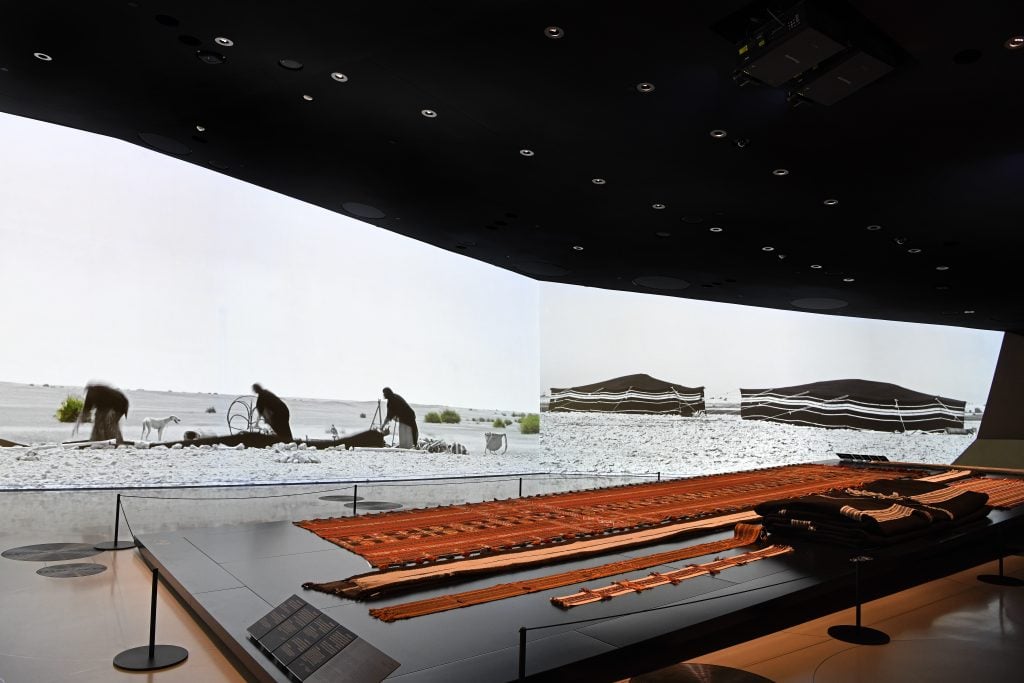Museums & Institutions
Al Sadu Textiles Made By Bedouin Women Tell Hidden Stories of the Arabian Gulf
The National Museum of Qatar celebrates the age-old tradition with a permanent display.

The National Museum of Qatar celebrates the age-old traditional weaving style of Al Sadu, made by the Bedouin women of the Arabian Peninsula. These fabrics are made with a traditional weaving technique, of warp-faced plain weave constructed on a ground loom, and are characterized by diverse geometric shapes to form distinctive patterns in signature colors of beige, red, brown and black. Al Sadu means “weaving done in a horizontal style” in Arabic.

A piece of Al Sadu textile. Courtesy Qatar Museums.
A gallery at the museum is covered with prominently displayed textiles champions the beauty and craftsmanship of these unique pieces, which are known for their durability and were recognised on the 2020 UNESCO Representative List of the Intangible Cultural Heritage of Humanity.
“The making of Sadu played a significant role in the lives of the Qatari people before the discovery of oil when movement was an essential way of life.” said Tania Abdulmonem Al Majid, Deputy Director of Curatorial Affairs at the National Museum of Qatar.
“Moving inland during the winter months in search of food and water, then moving to the coast at the start of the pearling season during the summer, two necessary elements for living and moving in the desert are the tent and camel. Tents, rugs, bags, cushions, and camel and horse decorations were made solely by women using a mix of camel and goat hair and sheep wool.”
“From spinning to dyeing to weaving, women would pass on the techniques and skills to their daughters and granddaughters,” she added. “Patterns used to decorate these textiles were inspired by the environment around them such as plants, animals and everyday items like coffee pots and incense burners telling a story only the weaver could understand.”

Gallery installation view. Courtesy Qatar Museums.
The gallery, explained Al Majid, tells the hardship of life in al barr, where inhabitants combatted challenging weather and terrain. In another room nearby are ornate pearls and tiaras—a stark contrast from the harshness of desert life.
“People are always amazed and a bit confused when they see the objects in this space,” said Al Majid. “They ask, ‘Why do you have European jewelry on display?’” What this collection of luxurious items demonstrates, she explained, is how the pearls that were obtained in the Gulf were exported and used by kings and queens and royals abroad. Pearling served as the local economy before the discovery of oil, and it greatly impacted Qataris’ way of life.”

Gallery installation view. Courtesy Qatar Museums.
In addition to Al Sadu textiles, the gallery offers a range of stimulating multimedia installations and artifacts, including films detailing what life was once like in the desert landscape, on pearling boats and within the winding alleyways of souks. It also charts the seasonal movement between al barr (the inland desert) and the coast of the original Qataris, to find water and green pastures as well as to sell goods.
Memories of traditional lifestyles are shared through films and multimedia installations such as touch screens to prove an immerse experience of what life was once like in the desert before oil was discovered. These are coupled with displays of Al Sadu textiles, juxtaposed with elaborate accessories such as camel saddles, leather water bags and instruments of navigation—all items essential for survival in the harsh climate of the desert.





